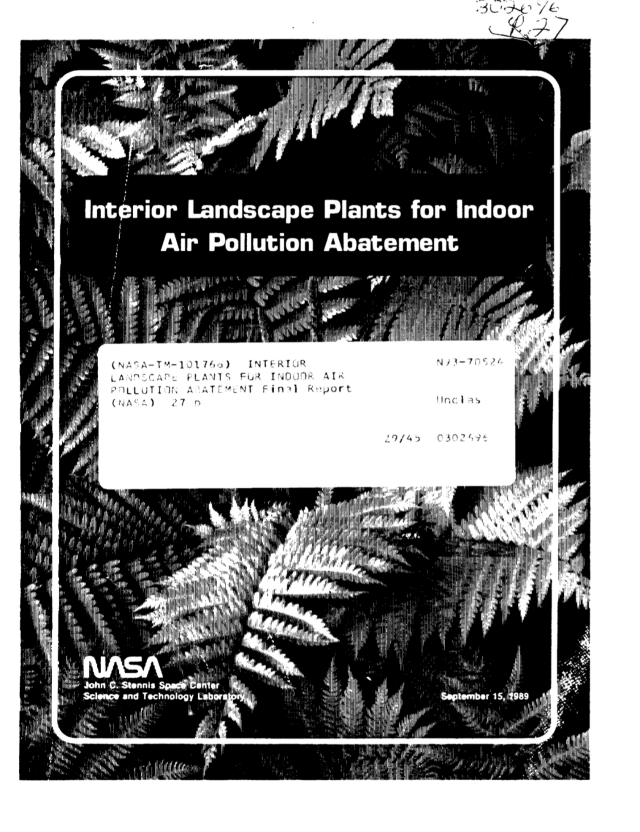
Interior Landscape Plants for Indoor Air Pollution Abatement
In this study, the leaves, roots, soil, and associated microorganisms of plants have been evaluated as a possible means of reducing indoor air pollutants. Additionally, a novel approach of using plant systems for removing high concentrations of indoor air pollutants such as cigarette smoke, organic solvents, and possibly radon has been designed from this work. This air filter design combines plants with an activated carbon filter. The rationale for this design, which evolved from wastewater treatment studies, is based on moving large volumes of contaminated air through an activated carbon bed where smoke, organic chemicals, pathogenic microorganisms (if present), and possibly radon are absorbed by the carbon filter. Plant roots and their associated microorganisms then destroy the pathogenic viruses, bacteria, and the organic chemicals, eventually converting all of these air pollutants into new plant tissue. It is believed that the decayed radon products would be taken up the plant roots and retained in the plant tissue.


 English
English




